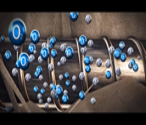The interaction between every technical stream is comprehensible from the flow chart (Fig. 1). In
the Part I of this article (published in October’19 Issue), we focussed on polymer science, where we mentioned names of different polymers,co-polymers, etc. To ensure a better understanding of the present article (Part II), we will refer Part I here.
Applied Polymer Chemistry Has A Major Role And Close Relation With Civil Engineering
The different polymers at a glance:
Cell of polymer chemistry–
1) Co-polymers
- Styrene butadiene – Where the coating needs a covering of screed on top and expansion-contraction of structure is not an issue.
- Styrene Acrylic – To some extent can resist weather action.
- Acrylic – Can withstand weather action for maximum 2 to 3 years.
2) Polyurethane – Maximum 4-5 years in weather action. Best as sealant.
3) Silicone – Cannot withstand weather action due to acidity of rainwater.
4) Ceramic – Good as a basic material for additive in water proofing and concrete strengthening additive and effective in heat reflecting paint.
5) Bitumen emulsion – After a period oxidation degrades bitumen.
6) Mastic – Useful in water proofing under any cover.
7) Cyano acrylate – No evidence
is found that this is failed to withstand water effect for long time. But good to achieve high bond strength between two substrates in presence of moisture even at room temperature.
8) Poly Methyl acrylate – Used as high strength film but not good to withstand weather action, used as an active ingredient to produce new generation tailor made plasticizer for concrete.
9) Poly methyl methacrylate – Same
10) Poly propylene – Good for fibre.
11) Poly vinyl alcohol – Not good for construction chemical.
12) Poly vinyl acetate – Specific uses.
13) Geotextiles
14) Epoxy system (How engineers can choose a right epoxy system for their actual requirement)
15) Polycarbonate
16) Concrete plasticizers
17) Concrete set retarders
18) Concrete water repellent
19) Concrete high strength achieving compound
20) Concrete quick setting compound
21) Stain removing agent
22) Stain protective coating
23) Construction adhesives
24) Nano composites – The best solution in construction if the composite is formulated in right way.
25) Heat resistant coating & Insulation technology
26) Floor cleaning agent
27) Timber protective coating to prevent decaying.
 Fig. 1: General Interaction in a Technical Stream
Fig. 1: General Interaction in a Technical Stream
28) Efflorescence and shrinkage crack preventive plaster and concrete additives
29) Curing free plaster and concrete additives.
30) Fire resistance coating
31) Waterproofing membrane
32) Tiles adhesive
33) Ethylene propylene dyne monomer – The liquid or solid form of this polymer is the best to protect weather action and structural movement. The liquid can access all the tiny holes on the surface and creates a seamless membrane with good adhesion to any substrate.
Styrene Butadiene Copolymer (SBC) Advantages – SBC is one of the cheaper synthetic rubbers. It offers excellent abrasion resistance, crack endurance and generally ages well, along with delivering good compression set resistance and water resistance.
Disadvantages- The major disadvantage of SBC includes its poor resistance to sunlight and ozone, ineffectiveness in outdoor applications, and inability to act in conditions containing steam and oil; due to this, it swells and becomes weakened over time.
Microbial Attack- A Noocardia species has been revealed to be capable of degrading Butadiene through stereo- specific epoxidization of the C=C bond and subsequent oxidation through pyruvate to acetate.
Poly Styrene Butadiene Styrene (SBS) Advantages– SBS is a hard synthetic rubber used for durability.
Disadvantages- The inherent disadvantage of SBS is its flammability, which can be overcome by addition of supplementary fire retardants (such as aluminium hydroxide, magnesium hydroxide, colemanite, antimony oxide, etc.) to the polymer matrix. However, high loadings (>30 wt.%) of the two fillers are required to impair the flammability of the matrix to an enough level, which may deleteriously affect the elastic properties of matrix itself.
Microbial Effect- The biocompatibility of ESBS membrane was evaluated with the cell culture of fibroblasts on the membrane. It revealed that the cells not only remained viable but also proliferated on the surface of the various ESBS membranes, following which the population doubling time for fibroblast culture decreased.
The microorganisms degrading the synthetic polymers PVC, polyurethane, nylon, and acrylics and their mode of action, are mentioned in Table 1.
The reason of such a study is coordination between civil engineering, polymer chemistry and microbiology.
The right material can be chosen for a specific purpose. Next we will study other polymers and material properties.

…To be continued





0 Comments